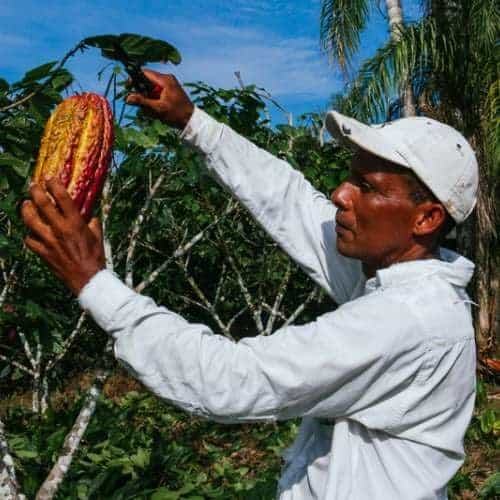Easter eggs are back in stores and the chocolate industry is running at full speed. From luxurious chocolates to brightly colored Easter eggs, chocolate remains a beloved product worldwide. But before these treats hit the shelves, the cocoa beans have traveled a long journey.
Netherlands: the largest importer of cocoa
The Netherlands plays a major role in cocoa transportation, as it is the world’s largest importer of cocoa beans. In 2023, the Netherlands imported over 1.2 billion kilograms of cocoa, worth more than 2.5 billion euros.* Unfortunately, some of these valuable cocoa beans are lost due to damage during the logistics process. importer of cocoa beans in the world. In 2023, the Netherlands imported over 1.2 billion kilograms of cocoa, worth more than €2.5 billion.* But did you know that a significant portion of these valuable cocoa beans is lost due to damage during cocoa transportation?
According to the latest figures from Statistics Netherlands, imports of cocoa beans have increased by almost 20% over the past decade. About 25% of these imports are resold directly to other countries, while the remaining 75% are processed in the Netherlands. Among other places, this is done in the Port of Amsterdam, which has the world’s largest handling and storage facilities for cocoa. An average of 750,000 tons of cocoa beans are stored here with a storage time of three to five years.**
Cocoa imports to Europe peak between November and March. There are not many specialized cocoa ports worldwide. Besides Amsterdam, Antwerp and Hamburg have relatively large transshipment facilities for cocoa beans.
The risks of cocoa transportation and storage
Cocoa beans take a long journey from producing countries such as the Ivory Coast and Ghana to Europe. This cocoa transportation is not without risks. During transport by cargo ship or in sea containers, differences in temperature and moisture can occur. Condensation in the container can lead to mold growth, making large quantities of cocoa beans unusable. Other threats are insects and pests that can cause damage during transport.
Cocoa beans are usually transported as bulk in the ship’s hold or in burlap sacks in shipping containers. During this journey, the beans may be exposed to high humidity and extreme temperature fluctuations. Because of the long transportation time – sometimes weeks or even months – the risk of quality loss is significant. This makes it important to take proper precautions and avoid wastage.
Sustainability in the cocoa chain

Sustainability in the cocoa chain not only means better working conditions for cocoa farmers, but also minimizing waste in the logistics chain. More and more companies in the sector are taking initiatives to optimise their cocoa transport and storage processes to reduce waste. This not only has economic benefits, but also contributes to more sustainable and responsible cocoa production.
Solutions for less waste
To minimize the impact of logistics wastage of cocoa, effective solutions are available:
Container Liner Plus: Fully lining containers with insulating material keeps the temperature stable, greatly reducing the risk of condensation.
Desiccants: Absorb moisture from the air, preventing mold on the cocoa beans.
Dataloggers: Monitors temperature and humidity during cocoa transportation so that anomalies can be quickly detected and addressed.
Improved ventilation: Proper air circulation in warehouses and ship holds can reduce the risk of mold and quality loss of cocoa beans.
The future of cocoa transportation
Demand for cocoa continues to grow worldwide. This means that the logistics chain must be constantly improved to minimize waste and guarantee the quality of cocoa beans. Innovations such as advanced sensor technology, better packaging materials and improved transportation methods play a crucial role in this.
Less waste, more cocoa
Cocoa beans are an indispensable raw material for chocolate, pharmaceutical and cosmetic products. Preventing waste in the cocoa chain is not only economically beneficial, but also contributes to a more sustainable logistics process. Praxas helps companies optimize their cocoa transportation through innovative protection methods.
Want to know more about how to protect cocoa from damage during transport?
Download the pdf here
Source:
* CBS
* Port of Amsterdam

